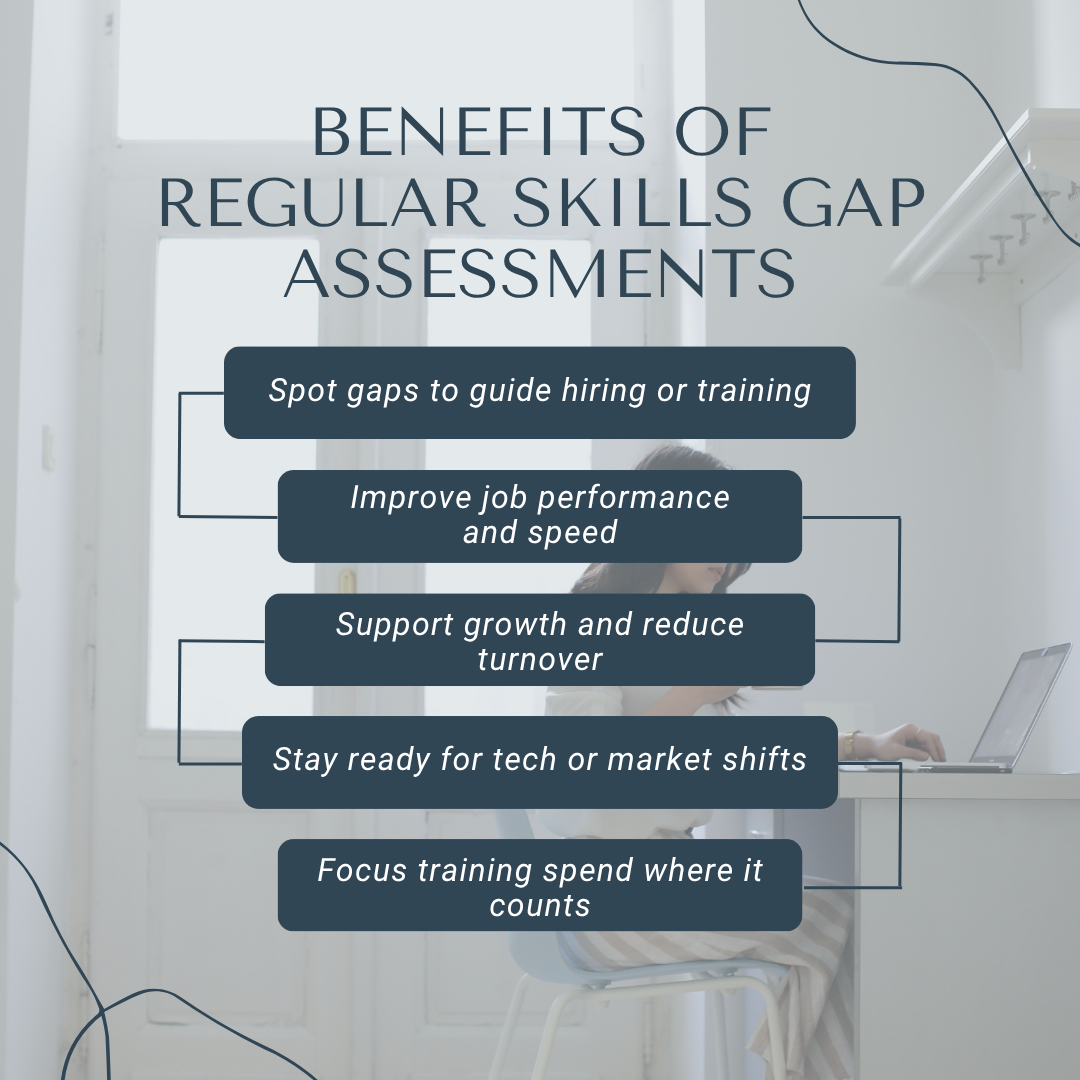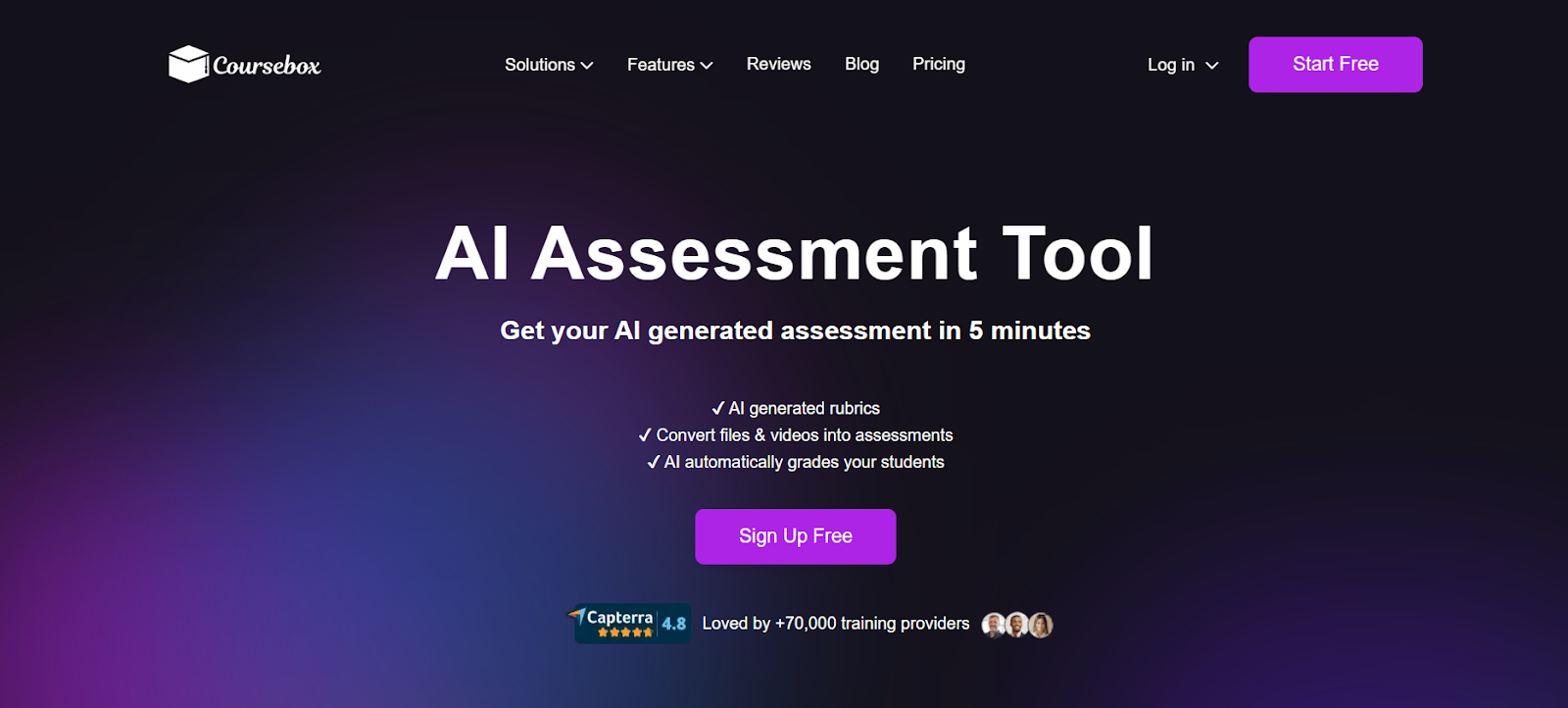Conducting a Skills Gap Assessment: A Simple Guide (+FREE Template)
Use this easy guide to conduct a skills gap assessment, find learning needs, and close performance gaps with confidence.
Use this easy guide to conduct a skills gap assessment, find learning needs, and close performance gaps with confidence.
.webp)
Skills gap assessment plays a crucial role in helping organizations stay competitive in a world where technology and job roles evolve faster than ever.
According to the World Economic Forum, 50% of all employees will need reskilling by 2025 as adoption of automation and digital tools accelerates (source). Knowing what skills your team lacks is no longer optional. It’s the first step toward building a future-ready workforce.
In this article, you'll learn what a skills gap assessment is, why it’s worth your attention, which types of skill gaps to look for, and how to run a successful assessment. We’ll also share a ready-to-use template to help you take action right away.
A skills gap assessment is a systematic process used to evaluate the difference between the skills employees currently have and the skills required for their roles or future organizational needs.
Simply put, it answers the question: What skills do our employees need to perform at their best, and where are the shortfalls?
Here’s what a skills gap assessment can help achieve:
Without regularly conducting skills gap assessments, companies risk falling behind competitors, losing top talent, and missing growth opportunities.
Before conducting a skills gap assessment, it helps to know the kinds of skills gaps organizations typically encounter:
Skills gaps can arise due to several reasons:
Recognizing these helps tailor your assessment effectively.

A skills gap assessment doesn’t have to be complex. With the right structure and smart tools like Coursebox AI, you can uncover exactly where your team needs support and take action with confidence.
Start by clarifying what you want to achieve:
Coursebox AI includes ready-to-use templates and guided prompts to help define your scope and skill domains faster, with no need to build everything manually.
Define the ideal skill sets for each role or business goal. This usually includes:
Instead of compiling this list by hand, Coursebox AI can scan job descriptions, documents, or even web pages to extract the key skills automatically and align them with desired outcomes, saving hours of manual setup.
Next, gather a clear view of the skills your workforce already has. Use a combination of:
Coursebox AI streamlines this step by auto-generating assessments, evaluating results instantly, and combining all data into one centralized dashboard, making it easy to compare results across individuals and teams.
Now compare the required vs. current skills to find out:
Coursebox AI brings all your assessment data into one dashboard, making it easier to compare skill levels across roles and teams.
Pro tip: You can make this step easier by using a training needs analysis questionnaire for better results.
With your gaps mapped out, it's time to close them. Your plan might include:
Coursebox AI goes a step further by recommending personalized learning paths for each employee. It can also build interactive online courses and video content using AI avatars, narration, and auto-translated modules making training fast, engaging, and scalable.
Skills and business needs change, so this process should be repeated. Keep it current by:
Coursebox AI automatically updates each employee’s skill profile as they learn and complete training. Dashboards show live progress, helping HR and managers track outcomes and stay proactive.
While useful, skills gap assessments aren’t always easy to implement. Here’s what to watch out for:
When job roles or required skills aren’t clearly defined, it becomes nearly impossible to measure what’s missing. Without a clear standard, assessments lack direction and meaning.
To prevent this, collaborate with department leads to regularly update job descriptions and outline expected competencies.
Tools like Coursebox AI can help generate or refine these profiles using AI-powered suggestions, making sure you're always assessing against an up-to-date, relevant benchmark.
If managers rely on personal judgment or informal evaluations, results can vary wildly across teams, making it hard to trust the data.
To solve this, introduce standardized evaluation tools and consistent rating criteria. With Coursebox AI, managers can use guided templates and objective scoring frameworks, helping ensure every assessment is fair, reliable, and aligned across the organization.
Many employees feel uneasy about being “tested,” especially if they’re unsure why it’s happening or what it means for them.
To reduce this resistance, frame the assessment as a development opportunity, not a performance review. Communicate the purpose clearly and involve employees in setting learning goals.
With Coursebox AI, they can even explore personalized growth paths, giving them more control and confidence in the process.
Collecting tons of data without knowing how to use it can stall the entire process. When insights aren’t clear, it’s hard to take action. To avoid this, focus on key roles or skills that matter most to your strategy.
Then, use analytics dashboards, like those in Coursebox AI, to visualize gaps, spot trends, and prioritize corporate training. This keeps the process focused and actionable instead of overwhelming.
To help you get started, here’s a simple skills gap assessment template you can adapt:
Employee Name: __________________________________
Role/Department: _________________________________
Assessment Date: _________________________________
Skill Assessment Entries
Skill 1: ___________________________________
Required Proficiency (1–5): ____________
Current Proficiency (1–5): ____________
Gap: ________________________________
Priority Level: ______________________
Development Action: _____________________________________________
Skill 2: ___________________________________
Required Proficiency (1–5): ____________
Current Proficiency (1–5): ____________
Gap: ________________________________
Priority Level: ______________________
Development Action: _____________________________________________
Skill 3: ___________________________________
Required Proficiency (1–5): ____________
Current Proficiency (1–5): ____________
Gap: ________________________________
Priority Level: ______________________
Development Action: _____________________________________________
Instructions

Conducting a skills gap assessment becomes significantly more efficient and effective with these Coursebox AI capabilities:
With these features, Coursebox AI:
Equipped with Coursebox AI, your assessment becomes not just a report, but a real engine of learning, growth, and workforce readiness.
Book a demo today!
